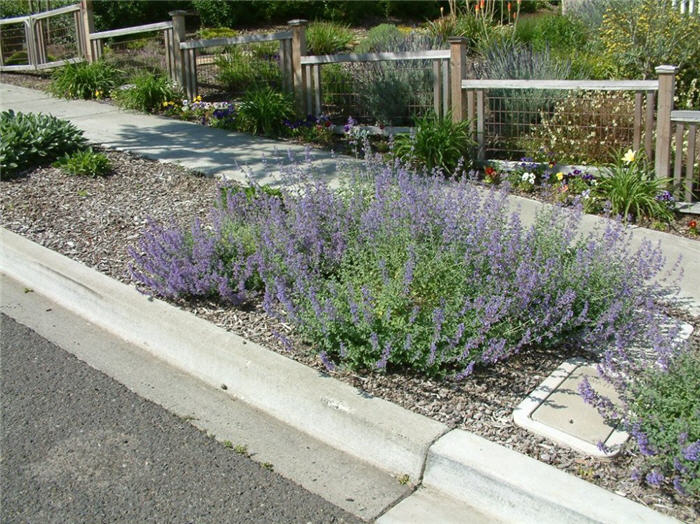| Botanical Name: Nepeta x faassenii | |
| Common Name: Catmint |

-
Anatomy
-
Culture
-
Design
Plant Type
Perennial
Height Range
1-3'
Flower Color
Blue, Lavender
Flower Season
Summer
Leaf Color
Grey Green
Bark Color
n/a
Fruit Color
n/a
Fruit Season
n/a
Sun
Full, Half
Water
Low
Growth Rate
Moderate
Soil Type
Sandy, Clay, Loam, Rocky, Unparticular
Soil Condition
Average, Poor, Well-drained, Dry
Soil pH
Neutral
Adverse Factors
Attracts Bees
Design Styles
English Cottage, Mediterranean, Ranch, Seascape, Spanish, Native Garden, Woodland
Accenting Features
Fragrance, Showy Flowers
Seasonal Interest
Summer
Location Uses
Entry, Perennial Border, Parking Strip, Patio, Raised Planter, Swimming Pool, With Rocks
Special Uses
Cascade, Container
Attracts Wildlife
n/a
Information by: Stephanie Duer
Photographer: Susan Frommer/Hunter
Photographer: Susan Frommer/Hunter
-
Description
-
Notes
Catmint makes soft, grey-green, rounded mounds from 10 to 24 inches high, depending on variety. Most will be wider than tall. This perennial has lavender blue flowers from late spring to early summer, though if you shear off the first flowers, it will frequently bloom again later in the summer. Different varieties have slightly different bloom times. Leaves are attractive, crinkled blue-grey and are aromatic.
Best grown in average, dry to medium moisture, well-drained soil in full sun to part shade. Thrives in dry soils in full sun, and is very drought tolerant. Shear flower spikes after initial flowering to promote continued bloom. Divide every few years if the center starts to thin. Cut back hard, a few inches above the crown, in late winter to early spring, before new growth emerges.